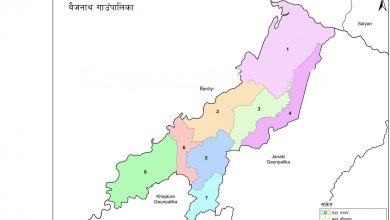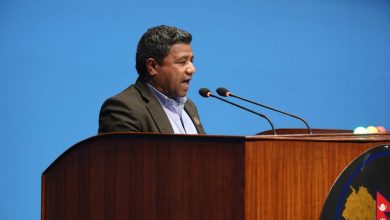Waiving permit fees for 97 peaks will open Nepal’s unclimbed mountains to the world: Department of Tourism Director Gautam
Kathmandu: The government of Nepal has waived climbing permit fees for 97 peaks in Karnali and Sudurpashchim provinces for a two-year period, aiming to promote tourism in regions that remain largely unexplored. The cabinet approved the decision allowing free access to mountains ranging between 5,870 metres and 7,132 metres — 77 of which are in Karnali province and 20 in Sudurpashchim province.
This decision could stimulate economic activity in remote districts that lack basic connectivity, employment opportunities, and tourism infrastructure. To understand the government’s motivation behind this new initiative and its potential impact, News Editor Arjun Sapkota spoke with Himal Gautam, Director at the Department of Tourism, who oversees mountaineering and adventure tourism in Nepal.
What is the main objective behind waiving climbing permit fees for 97 peaks in Karnali and Sudurpashchim provinces?
Recently, the government of Nepal waived the expedition fees for 97 mountains located in remote areas of the country — specifically in the two provinces of Karnali and Sudurpashchim.
The main reason behind this decision is that, although the government has opened 462 mountains for expeditions, many of them remain unclimbed — meaning no human has yet reached these summits. These two provinces are also socially and economically underdeveloped and rank low on the Human Development Index. By waiving the expedition fee, commonly referred to as the “royalty,” the government hopes to attract mountaineers to these regions.
If we successfully spread this message to the global mountaineering community, more climbers will visit these areas. This will lead to the first ascents of many peaks and help establish a mountaineering culture in the region. Such activity is expected to positively impact the lives and livelihoods of local people and boost the regional economy.
Moreover, these provinces boast extraordinary natural beauty, as well as rich social and cultural heritage. Once mountaineers start coming in, many of the region’s untapped and unexplored tourism destinations will also gain attention. This is the main reason the government has decided to waive the expedition fees for these 97 mountains.
Since these mountains are still unexplored, how does the government plan to promote these lesser-known peaks internationally to attract climbers?
Simply waiving the mountaineering royalty is not enough to promote these unclimbed and unexplored mountains. Much more effort is needed, as these peaks are in remote areas with difficult access and various other challenges.
The government is trying its best to market these mountains. We are working closely with mountaineering agencies and other stakeholders to develop promotional packages. This will help us better showcase the mountains and spread the message about the fee waiver to the international mountaineering community — so they are informed and encouraged to come.
What steps are being taken to improve infrastructure and access in these remote areas to support increased climbing activity and ensure the safety of climbers?
Improving accessibility does not mean that all the mountains must be reached by comfortable roads or transport. Mountaineering is a form of adventure tourism, and the mountaineering community values the challenge of expeditions and trekking.
However, we must ensure and communicate to potential tourists and climbers that emergency access is available — especially in case of accidents or danger. There should be reliable rescue systems in place.
To ensure this, the Department of Tourism, the Ministry of Culture, Tourism and Civil Aviation, and other stakeholders are working together closely. We are coordinating efforts to improve rescue readiness and basic infrastructure, while still preserving the sense of adventure that mountaineering offers.









Comments